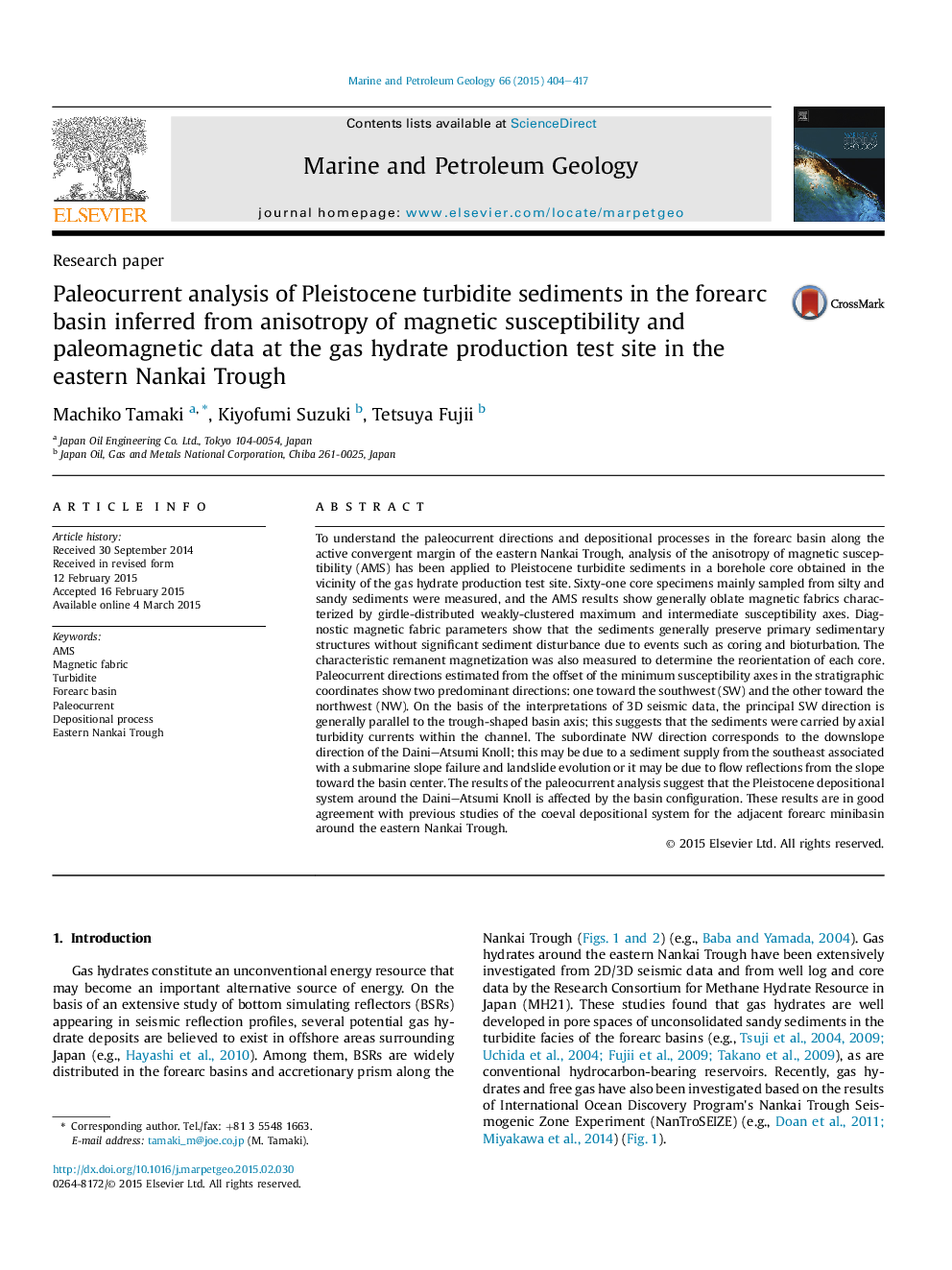| Article ID | Journal | Published Year | Pages | File Type |
|---|---|---|---|---|
| 6435020 | Marine and Petroleum Geology | 2015 | 14 Pages |
â¢AMS were measured on core samples taken from turbidites around the Nankai Trough.â¢Paleocurrent analyses show two dominant directions toward the SW and the NW.â¢The principal direction is concordant with trough-shaped basin axis.â¢The subordinate direction suggests coexistence of a lateral flow.â¢The results can be related to the forearc basin configuration in subduction zone.
To understand the paleocurrent directions and depositional processes in the forearc basin along the active convergent margin of the eastern Nankai Trough, analysis of the anisotropy of magnetic susceptibility (AMS) has been applied to Pleistocene turbidite sediments in a borehole core obtained in the vicinity of the gas hydrate production test site. Sixty-one core specimens mainly sampled from silty and sandy sediments were measured, and the AMS results show generally oblate magnetic fabrics characterized by girdle-distributed weakly-clustered maximum and intermediate susceptibility axes. Diagnostic magnetic fabric parameters show that the sediments generally preserve primary sedimentary structures without significant sediment disturbance due to events such as coring and bioturbation. The characteristic remanent magnetization was also measured to determine the reorientation of each core. Paleocurrent directions estimated from the offset of the minimum susceptibility axes in the stratigraphic coordinates show two predominant directions: one toward the southwest (SW) and the other toward the northwest (NW). On the basis of the interpretations of 3D seismic data, the principal SW direction is generally parallel to the trough-shaped basin axis; this suggests that the sediments were carried by axial turbidity currents within the channel. The subordinate NW direction corresponds to the downslope direction of the Daini-Atsumi Knoll; this may be due to a sediment supply from the southeast associated with a submarine slope failure and landslide evolution or it may be due to flow reflections from the slope toward the basin center. The results of the paleocurrent analysis suggest that the Pleistocene depositional system around the Daini-Atsumi Knoll is affected by the basin configuration. These results are in good agreement with previous studies of the coeval depositional system for the adjacent forearc minibasin around the eastern Nankai Trough.
